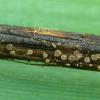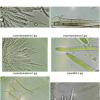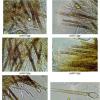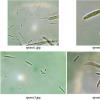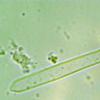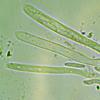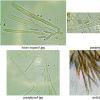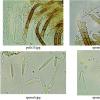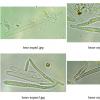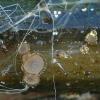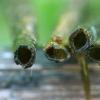
09-12-2025 12:06
 Andgelo Mombert
Andgelo Mombert
Bonjour,Je recherche l'article concernant Hypobryo

12-12-2025 18:39
Mirek GrycHello everyone.Macrofeatures similar to Mollisia b

07-12-2025 16:07
Arnold BüschlenHallo, ich habe in einer Moos-Aufsammlung (epiphy

08-12-2025 21:04
Mark Stevens"Hello everyone,I'm relatively new to microscopy (

08-12-2025 18:59
 Lothar Krieglsteiner
Lothar Krieglsteiner
.. found by a seminar-participant, I do not know t

08-12-2025 17:37
 Lothar Krieglsteiner
Lothar Krieglsteiner
20.6.25, on branch of Abies infected and thickened
Lasiobelonium nidulum sur Phalaris arundinacea ?
Bernard CLESSE,
18-05-2016 18:11
 Bonsoir à tous,
Bonsoir à tous, Je renvoie ce message car apparemment il ne vous est pas parvenu…
J'ai trouvé hier, sur tiges pourries de baldingère (Phalaris arundinacea) ce que je pense être Lasiobelonium nidulum. Pourriez-vous me le confirmer ?
a) poils cylindriques, septés, bruns, à extrémité hyaline, soit cylindriques à extrémité un peu enflée, soit coniques à base ampullacée
b) asques IKI+, plus courts que les paraphyses
c) paraphyses lancéolées, plus longues que les asques : 69-84x5
d) spores étroitement fusiformes : 8-15x1,5-2
Bernard
Enrique Rubio,
18-05-2016 18:16
Re : Lasiobelonium nidulum sur Phalaris arundinacea ?
Pourquoi non L. horridulum?
Hans-Otto Baral,
18-05-2016 18:52

Re : Lasiobelonium nidulum sur Phalaris arundinacea ?
I see L. horridulum as a Lasiobelonium, but this here with its rather broad hairs with capitate apex is a Trichopezizella, and I see no clear difference to T. rubroguttatus.
I am unaware of samples on grasses however. Important would be to claruy the ascus base, then we could see if T. nidulus (without croziers) can be excluded, though this species never has such long spores.
I am unaware of samples on grasses however. Important would be to claruy the ascus base, then we could see if T. nidulus (without croziers) can be excluded, though this species never has such long spores.
Bernard CLESSE,
18-05-2016 21:24
Hans-Otto Baral,
18-05-2016 22:59

Re : Lasiobelonium nidulum sur Phalaris arundinacea ?
This is wonderful work now, and I would exclude T. nidulus mainly because of the long spores and the restriction of that species to Polygonatum.
The problem is that T. rubroguttata occurs with and without croziers, and nobody knows if they are one species or more, or what character the type has.
But so far I had this species only on dicots. Could you do me a favour: cross-cut the culm and take a macrophoto of it: I think it should be easy to verify the host family. Forget this if your culm includes the nodes which are characteristic of Poaceae.
The problem is that T. rubroguttata occurs with and without croziers, and nobody knows if they are one species or more, or what character the type has.
But so far I had this species only on dicots. Could you do me a favour: cross-cut the culm and take a macrophoto of it: I think it should be easy to verify the host family. Forget this if your culm includes the nodes which are characteristic of Poaceae.
Bernard CLESSE,
19-05-2016 08:27

Re : Lasiobelonium nidulum sur Phalaris arundinacea ?
Hi Zotto,
I'm sure that the host plant is Phalaris arundinacea (Poaceae family, a family that I know well) but I will gladly do a macro shot of nodes and another of a culm section.
See you tonight.
Best regards,
Bernard
I'm sure that the host plant is Phalaris arundinacea (Poaceae family, a family that I know well) but I will gladly do a macro shot of nodes and another of a culm section.
See you tonight.
Best regards,
Bernard
Bernard CLESSE,
19-05-2016 19:45
Hans-Otto Baral,
19-05-2016 20:07

Re : Lasiobelonium nidulum sur Phalaris arundinacea ?
The culms look a bit angular, but I believe it. Better would be a closeup in prder to see the vascular bundles.
Bernard CLESSE,
19-05-2016 20:16

Re : Lasiobelonium nidulum sur Phalaris arundinacea ?
I cut the rotten culms with scissors so it's difficult to see their original round section.
But if you want I can try to make a fine cut and see under the microscope.
Bernard
But if you want I can try to make a fine cut and see under the microscope.
Bernard
